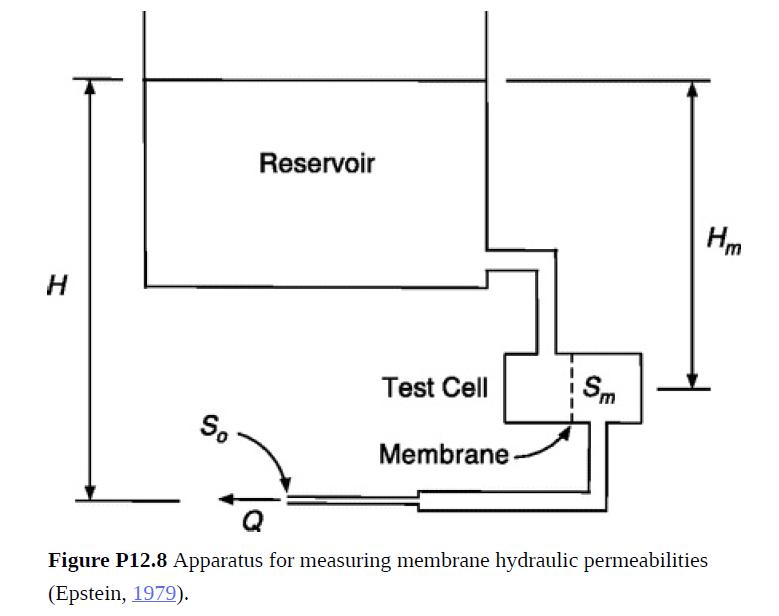The setup in Fig. P12.8 was used to help characterize porous membranes employed in diffusion studies (Epstein,
Question:
The setup in Fig. P12.8 was used to help characterize porous membranes employed in diffusion studies (Epstein, 1979). The membrane hydraulic permeability km obtained using this apparatus was used to find the pore diameter d. If a transmembrane pressure difference |ΔP|m gives a volume flow rate Q through a membrane of area Sm, then km = Q/(Sm|ΔP|m). After a reservoir was placed at a measured height H, Q was found by timing the movement of the meniscus in a pipette placed at the outlet. The cross-sectional area of the outlet was So.
(a) The membranes had straight cylindrical pores and the pore number density n (number of pores per unit area) and pore length L for each membrane were measured separately. If Poiseuille's law applies to each pore, show how to calculate d from km, n, and L. With H = 20 cm, d = 80 nm, and L = 6.0 μm being typical, why was it reasonable to assume fully developed laminar flow in the pores?
(b) If the membrane were the only resistance to flow, how could km be calculated from the dependence of Q on H?
(c) It was suspected that resistances in other parts of the apparatus were not always negligible, especially for relatively large pore sizes and high flow rates. Accordingly, Q was measured as a function of H with no membrane present. The extramembrane loss Ev, o was expressed as
where F is dimensionless and vo = Q/So is the mean velocity at the outlet. Show how to evaluate F from such data. In contrast to turbulent flow, where loss coefficients are nearly constant, in this laminar-flow apparatus F was sensitive to Q. (It was found to vary as Re–1.24, where Re is the outlet Reynolds number.)
(d) With F a known function of Re, show how to find km from the original experiments.
Step by Step Answer:

Introduction To Chemical Engineering Fluid Mechanics
ISBN: 9781107123779
1st Edition
Authors: William M. Deen





